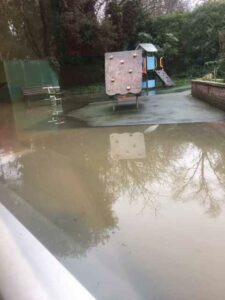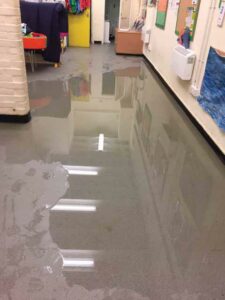Over the past fortnight, and after a particularly heavy downpour floods have once again taken over Tooting Triangle. My attention has been drawn to the number of posts on social media showing scale of the flooding issue. The surrounding paths and playground have become inaccessible and the buildings are regularly effected much, to the disappointment of the local community.
From our Facebook page ... it's a little bit damp at the playground/boxing club end of Triangle field on #Tooting Bec Common pic.twitter.com/BpvdzfODVt
— The FOTC (@TootingCommon) January 14, 2021
So how do we plan to stop these ‘annual’ Triangle Floods happening year on year?
We are well aware that drainage, or lack of it, has been an issue for many years. Back in early 2020, as part of our planning application, we did a full flood risk assessment. Its purpose was to identify and assess this known flooding problem and seek to put forward an effective and permanent solution.
The main issue with the site (that covers 5000 square metres including the existing boxing club, stay and play space garden and football pitch) is that it does not have adequate surface water drainage in place. Even with average rainfall flooding will continue year on year, it will only be prevented with a set of robust measures to channel the excess surface water into suitable sized drains.
Solving the flooding issue sooner rather than later is even more important as the Triangle has seen a huge increase pedestrian traffic and users of the playground facilities over the past year due to the national lockdowns during the Covid-19 pandemic.
Naturally there has been some debate regarding the flooding issue on social media, and whether anything is going to be done about it, and to what level.
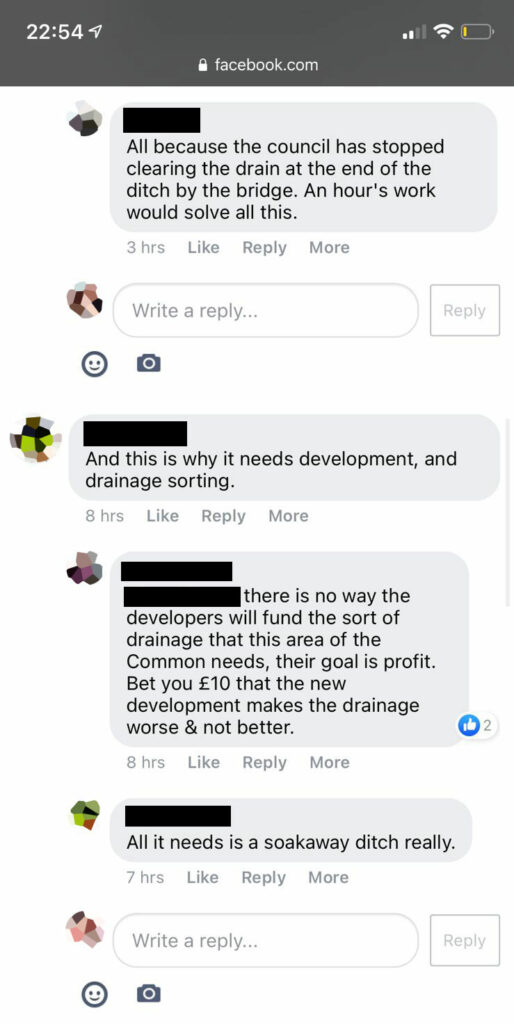
Firstly what have we learnt…
From our report we understand that the flooding is solely due to precipitation and subsequent runoff from the common, there are no rivers or sewage issues nearby to burst their banks or get blocked up.
When there are periods of wet weather, the topsoil on the common grassland becomes saturated to the point that it is effectively a bog. If there is further rain the runoff heads towards the west and floods the pitch, playground, garden and in many cases into the buildings themselves.
Although there is no documentation available, we are advised by the management of the site that at some point in the past a land drain consisting of a trench filled with sand and gravel was installed between the common and the pitch and that a soakaway was constructed to the south of the pitch. The soakaway would only be able to release water to the topsoil (as the underlying subsoil is impermeable clay) therefore, once the topsoil is saturated the soakaway ceases to function.
This means any large volumes of water generated by heavy rain onto already saturated land can only escape via the gully on the south side of the Triangle and 100mm foul drain serving the building on the north side. The 100mm drain does not have the capacity to remove these large volumes of surface water quickly enough, so they can back up quickly and the water spreads.
What do we plan to do about it
We plan to resolve this situation by investing in an effective drainage infrastructure scheme. We have undertaken a flood risk assessment and commissioned Crofts Structural Engineers to design a system that would manage the excess water and enable the drains to cope with the expected water flow and any excess water in the area (full details can be found in the planning application).
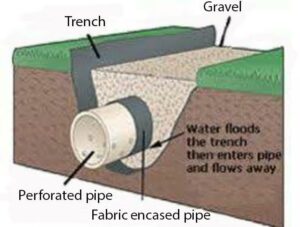
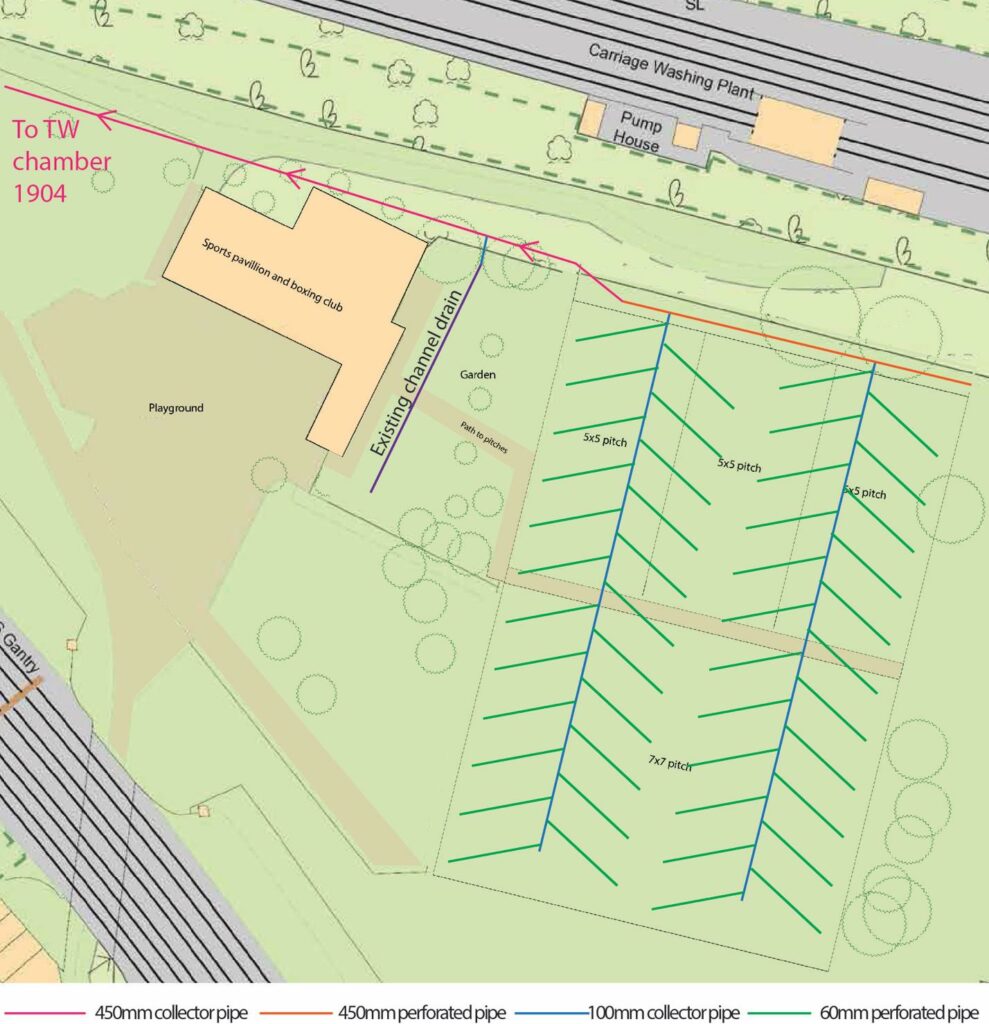
We believe our drainage plans will ensure any flooding around the pitches, playground and boxing club are kept to a minimum in the future, and surface runoff from the common is also drained away efficiently.



